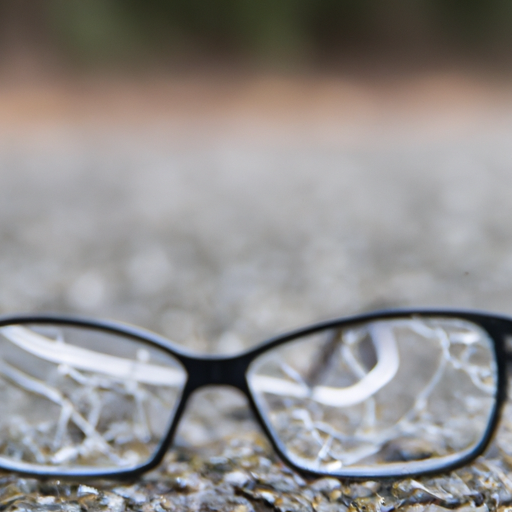If you’ve ever wondered about the causes of low vision and how it can affect your eyesight, look no further. At 50 Dollar Eye Guy, our team of friendly and professional doctors, including Dr. Grace and Joseph Tegenkamp, and Dr. Jeanine Spoors, are here to shed light on this important topic. With our commitment to exceptional customer service, personalized care, and extensive knowledge, we strive to provide the best possible vision care for all our patients in Pensacola. From comprehensive eye exams to a wide selection of fashionable eyewear, we have everything you need to ensure optimal eye health. Make an appointment today and let us help you understand the factors affecting visual impairment.
Introduction
Low vision is a condition that affects millions of people worldwide. It refers to a visual impairment that cannot be fully corrected with glasses, contact lenses, medication, or surgery. While low vision can occur at any age, there are a variety of factors that can contribute to its development. In this article, we will explore some of the main causes of low vision and how they can impact your eye health. It is important to note that this is not an exhaustive list, but rather a comprehensive overview to help you better understand the factors that can affect your vision.
I. Age-related causes
As we age, our eyes go through a natural aging process, which can lead to various conditions that cause low vision. Let’s explore some of these age-related causes:
1.1. Cataracts
Cataracts are one of the leading causes of visual impairment worldwide. They occur when the lens of the eye becomes cloudy, making it difficult for light to pass through and reach the retina. This can result in blurry or hazy vision, sensitivity to light, and difficulty seeing at night.
1.2. Age-related macular degeneration
Age-related macular degeneration (AMD) affects the macula, which is the central part of the retina responsible for sharp, central vision. AMD can lead to a loss of central vision, making it difficult to read, drive, or recognize faces. There are two types of AMD: dry AMD, which progresses slowly, and wet AMD, which can lead to rapid vision loss if left untreated.
1.3. Glaucoma
Glaucoma is a group of eye conditions that damage the optic nerve, which is responsible for transmitting visual information from the eye to the brain. It is often associated with high pressure inside the eye. Glaucoma gradually reduces peripheral vision, and if left untreated, can lead to tunnel vision and eventually blindness.
II. Genetic causes
Some individuals are born with genetic conditions that can contribute to low vision. Let’s take a closer look at a few of these genetic causes:
2.1. Congenital cataracts
Congenital cataracts are present at birth or develop during early childhood. They can be caused by genetic mutations or occur as a result of infections during pregnancy. Congenital cataracts can result in blurred vision, sensitivity to light, and may require early intervention to prevent long-term vision complications.
2.2. Retinitis pigmentosa
Retinitis pigmentosa is a genetic disorder that affects the retina and causes the gradual loss of peripheral vision. It can also lead to night blindness and difficulty adapting to changes in light. While there is currently no cure for retinitis pigmentosa, there are treatment options available to manage its progression.
2.3. Leber’s congenital amaurosis
Leber’s congenital amaurosis (LCA) is a rare genetic disorder that affects the retina, leading to severe vision loss or blindness in infancy or childhood. LCA is caused by mutations in various genes and can result in reduced visual acuity, sensitivity to light, and abnormal eye movements. While there is no cure for LCA, early intervention and support can help individuals manage their visual impairment.
III. Eye injuries
Eye injuries can have a significant impact on vision and may result in long-term visual impairment. Here are some common types of eye injuries:
3.1. Blunt trauma
Blunt trauma refers to a direct blow to the eye, often caused by accidents, falls, or sports-related incidents. This can lead to a range of injuries, including fractures of the orbital bones, corneal abrasions, retinal detachment, or damage to the lens. Depending on the severity of the injury, treatment options may vary, but immediate medical attention is crucial to prevent further damage.
3.2. Penetrating injuries
Penetrating injuries occur when a foreign object, such as a piece of metal or glass, enters the eye. These injuries can cause severe damage to the eye structures, including the cornea, iris, lens, or retina. Immediate medical intervention is essential to minimize the risk of infection and preserve vision.
3.3. Chemical burns
Chemical burns to the eye can occur when harmful substances, such as acids or alkalis, come into contact with the eye surface. These burns can cause extensive damage and may result in permanent vision loss if not promptly and appropriately treated. It is crucial to flush the eye with water immediately and seek immediate medical attention in these cases.
IV. Systemic diseases
Certain systemic diseases can have a direct impact on eye health and contribute to low vision. Here are a few examples:
4.1. Diabetes
Diabetic retinopathy is a complication of diabetes that affects the blood vessels in the retina. Over time, high blood sugar levels can damage these blood vessels, leading to vision problems. Diabetic retinopathy can cause blurred or distorted vision, floaters, and even blindness if left untreated. Regular eye exams and proper diabetes management are essential in preventing and managing this condition.
4.2. Hypertension
Uncontrolled high blood pressure can damage the blood vessels throughout the body, including those in the eyes. Hypertensive retinopathy can cause changes in retinal blood vessels, leading to reduced blood flow and potential vision loss. It is important to manage hypertension and regularly monitor eye health to prevent complications.
4.3. Multiple sclerosis
Multiple sclerosis (MS) is a chronic autoimmune disease that affects the central nervous system, including the optic nerves. Optic neuritis, inflammation of the optic nerve, is a common visual symptom of MS and can cause blurry vision, eye pain, or even temporary vision loss. Treating the underlying MS and managing symptoms can help preserve vision.
V. Infections and inflammation
Infections and inflammation of the eye can also contribute to low vision. Let’s explore a few examples:
5.1. Uveitis
Uveitis is the inflammation of the uvea, the middle layer of the eye. It can be caused by infections, autoimmune diseases, or as a result of eye trauma. Uveitis can cause eye redness, pain, light sensitivity, and blurred vision. Prompt diagnosis and treatment are crucial to prevent complications and preserve vision.
5.2. Conjunctivitis
Conjunctivitis, also known as pink eye, is an inflammation of the conjunctiva, the thin transparent layer that covers the white part of the eye. It can be caused by viruses, bacteria, or allergies. Conjunctivitis can cause redness, itching, discharge, and blurred vision. While most cases are mild and resolve on their own, certain forms of conjunctivitis may require medical intervention.
5.3. Herpes simplex virus
The herpes simplex virus can affect the eyes, causing a condition known as herpes keratitis. This viral infection can lead to corneal ulcers, scarring, and vision loss if not promptly treated. Symptoms may include eye pain, redness, blurred vision, and sensitivity to light. Early intervention is crucial in managing and preventing complications.
VI. Medications and side effects
Certain medications and their side effects can impact vision and contribute to low vision. Let’s take a look at a few examples:
6.1. Corticosteroids
Prolonged use of corticosteroids, such as prednisone, can increase the risk of developing cataracts and glaucoma. These medications can also cause steroid-induced cataracts and raise the intraocular pressure, leading to optic nerve damage. Close monitoring and regular eye exams are crucial for individuals on long-term corticosteroid use.
6.2. Antipsychotic drugs
Some antipsychotic medications can cause side effects, such as blurred vision and difficulty focusing. These visual disturbances can impact an individual’s daily life and should be discussed with a healthcare provider.
6.3. Anti-inflammatory medications
Certain anti-inflammatory medications, such as nonsteroidal anti-inflammatory drugs (NSAIDs), can cause temporary vision changes, including blurred or double vision. If these side effects occur, it is important to consult with a healthcare professional.
VII. Lifestyle factors
Lifestyle factors can play a role in the development of low vision. Let’s explore a few examples:
7.1. Smoking
Smoking has been linked to an increased risk of developing conditions such as cataracts, macular degeneration, and optic nerve damage. Quitting smoking and avoiding exposure to secondhand smoke can help reduce the risk of vision-related complications.
7.2. Poor nutrition
A diet lacking essential nutrients, such as vitamins A, C, and E, zinc, and omega-3 fatty acids, can increase the risk of developing eye conditions like macular degeneration and cataracts. Adopting a balanced diet that includes fruits, vegetables, and foods rich in these nutrients can help support eye health.
7.3. Excessive alcohol consumption
Excessive alcohol consumption can contribute to nutritional deficiencies, liver damage, and optic neuropathy. These factors can all contribute to low vision. Moderate alcohol consumption and maintaining a balanced lifestyle can help reduce these risks.
VIII. Environmental factors
Environmental factors can also impact eye health and contribute to low vision. Let’s explore a few examples:
8.1. UV radiation exposure
Prolonged exposure to ultraviolet (UV) radiation from the sun can increase the risk of developing cataracts and macular degeneration. Wearing proper UV-protective eyewear and using sunscreen on the face and eyelids can help reduce these risks.
8.2. Air pollution
Exposure to air pollution, both indoor and outdoor, can contribute to the development or worsening of eye conditions, such as dry eye syndrome and macular degeneration. Taking steps to minimize exposure, such as using air filters, wearing protective glasses, and keeping indoor spaces clean, can help reduce these risks.
8.3. Occupational hazards
Certain occupations, such as construction or manufacturing jobs, may expose individuals to eye hazards, such as flying debris, chemicals, or dust. Using appropriate protective eyewear and following safety protocols can help prevent eye injuries and long-term vision problems.
X. Other causes
In addition to the categories mentioned above, there are several other causes of low vision that may not fit into a specific category. Here are a few examples:
10.1. Retinal detachment
Retinal detachment occurs when the retina separates from the underlying layers of the eye. This can lead to a sudden onset of flashes, floaters, or a curtain-like shadow in the vision. Retinal detachment is considered a medical emergency and requires immediate surgical intervention to prevent permanent vision loss.
10.2. Optic nerve damage
Damage to the optic nerve, which connects the eye to the brain, can lead to decreased vision or blindness. Optic nerve damage can occur due to various reasons, including trauma, inflammation, or diseases like glaucoma. The underlying cause must be identified and treated to prevent further vision loss.
10.3. Ocular tumors
Rarely, tumors can develop within or around the eye, affecting vision and eye health. These tumors may be benign or malignant and can require surgical removal or other treatment options depending on their nature and location. Regular eye exams and prompt evaluation of any unusual symptoms are crucial in detecting and managing ocular tumors.
In conclusion, low vision can have various causes, from age-related conditions to genetic factors, injuries, systemic diseases, infections, medications, lifestyle and environmental factors, and other underlying conditions. It is important to prioritize regular eye exams, take preventive measures, and promptly seek medical attention if any changes in vision occur. By understanding the factors that can affect our vision, we can take steps to protect and preserve our eye health for a lifetime of optimal visual function. Remember, if you are ever in need of exceptional eye care and personalized service, you can always visit the friendly and professional team at 50 Dollar Eye Guy.

